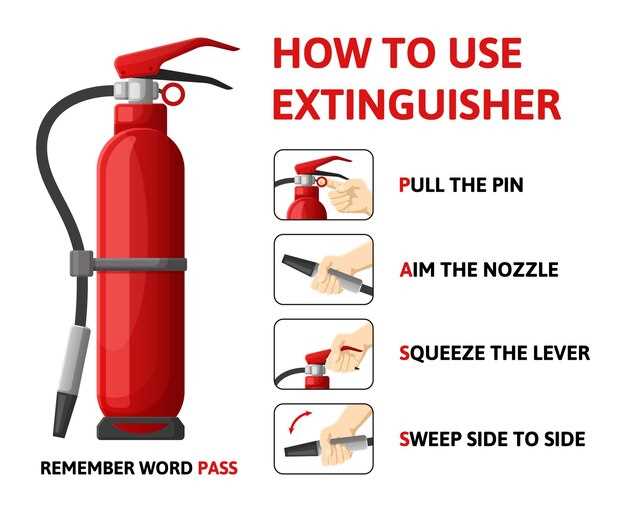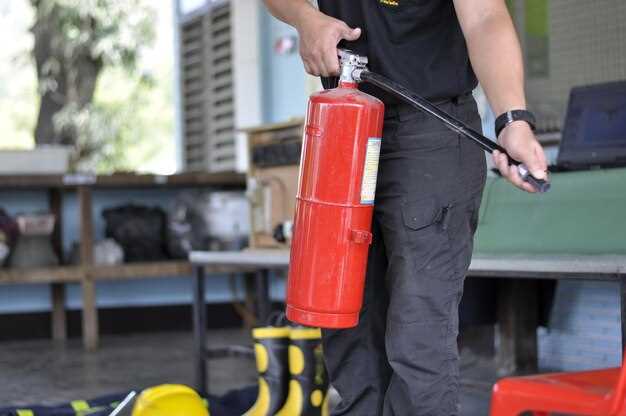
In the unpredictable realm of automotive experiences, the significance of safety cannot be overstated. One of the critical components for ensuring safety during unforeseen circumstances, such as a vehicle fire, is the fire extinguisher. Knowing where to install this essential safety device can make a significant difference in emergency situations.
Fires in vehicles can occur for various reasons, including electrical malfunctions, flammable materials, or accidents. Understanding where to place a fire extinguisher within your vehicle empowers drivers to respond swiftly when every second counts. It is not merely about having a fire extinguisher but ensuring it is strategically located for quick access is fundamental.
To maximize your chances of successfully combating a fire, it is crucial to consider the optimal location for your fire extinguisher. Proper installation requires careful thought about visibility, accessibility, and vehicle layout. In the following sections, we will explore the best practices for fire extinguisher placement, ensuring that you are prepared and equipped to handle potential fire hazards effectively.
Identifying the Best Spot for Your Fire Extinguisher

Choosing the optimal location for your fire extinguisher within your vehicle is crucial for ensuring safety and accessibility. Ideally, the extinguisher should be installed in a place that is easily reachable by the driver and passengers in case of an emergency. Consider placing it within arm’s reach, either on the driver’s side or near the front passenger seat.
One of the most effective spots is under the front seat, where it can be securely anchored but still easily accessible. Ensure that it does not interfere with seat adjustments or become a projectile during sudden stops. An alternative location is on the back of the center console, which keeps it within reach while maintaining a tidy interior.
Additionally, it is vital to ensure that the extinguisher is visible and not obstructed by other items. Keeping it in a designated mounting bracket can help keep it secure and ready for immediate use. Regularly checking the extinguisher’s visibility and status is essential to ensure it remains functional and ready to combat fire emergencies.
Ultimately, the best location for your fire extinguisher balances accessibility, security, and visibility, providing peace of mind while driving. Always follow installation guidelines to maintain safety standards and ensure compliance with local regulations.
How to Securely Install a Fire Extinguisher in Your Car

Installing a fire extinguisher in your vehicle is essential for ensuring safety during emergencies. Follow these steps to securely install a fire extinguisher in your car:
First, choose an appropriate fire extinguisher that suits the types of fires common in vehicles, such as Class B (flammable liquids) and Class C (electrical fires). Select a compact model that can easily fit in your car without obstructing movement.
Next, identify the best location for installation. The most recommended spots include the passenger seat area, under the driver’s seat, or in the trunk. Ensure the chosen location is easily accessible to both the driver and passengers in case of emergencies.
To secure the extinguisher, use a mounting bracket designed for your specific extinguisher model. Attach the bracket to a stable surface, such as the seat frame or a side panel, using screws or heavy-duty adhesive tape. Ensure that the extinguisher sits snugly within the bracket and does not rattle or move while the vehicle is in motion.
After installing, test the accessibility of the extinguisher by simulating a retrieval in a safe environment. Practice removing the extinguisher quickly and with confidence to ensure preparedness during an actual emergency.
Finally, check the extinguisher regularly to ensure it is in good working condition. Inspect the pressure gauge, ensure the pin is intact, and verify that the extinguisher has not expired. Regular maintenance will help you rely on your fire extinguisher when needed most.
Regular Maintenance Tips for Your Vehicle’s Fire Extinguisher
Ensuring the safety of your vehicle includes regular checks and maintenance of your fire extinguisher. Install your extinguisher in an easily accessible location within the vehicle to ensure prompt action in case of fire. Regularly inspect the device for any signs of damage, such as dents, rust, or leakage, which can compromise its effectiveness.
Check the pressure gauge monthly to confirm that it is within the recommended range. If the pressure is too low or the gauge indicates empty, replace the extinguisher immediately. Additionally, make it a habit to shake the extinguisher occasionally. This helps prevent the agent from settling and maintains its readiness for use.
Every year, ensure that you have your fire extinguisher serviced by a professional. Such inspections are crucial in assessing the overall condition and functionality of the extinguisher. Knowing the expiration date of your extinguisher is also essential; replace it before the end of its lifespan to maintain safety standards.
Lastly, familiarize yourself with the operating instructions located on the extinguisher. In the event of a fire, understanding how to operate it effectively is vital. By adhering to these maintenance tips, you can enhance your vehicle’s safety and be prepared for any fire incidents that may arise.



